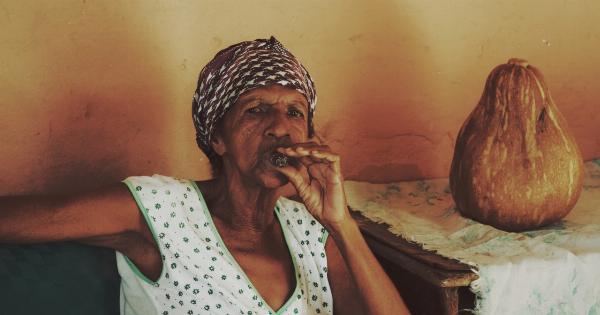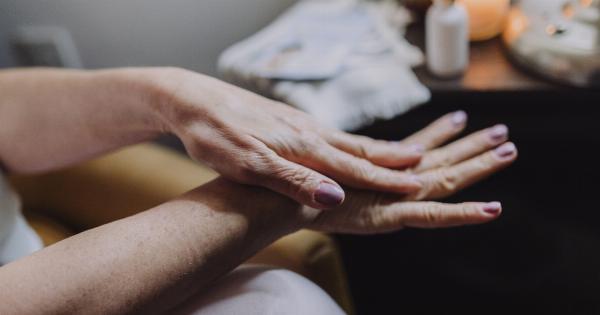Cancer treatment often brings along a variety of side effects, and one of the most visible and noticeable ones is skin changes.
Skin changes during cancer treatment can be concerning and sometimes uncomfortable, but with proper management and care, it is possible to alleviate some of these symptoms and maintain healthier skin. In this article, we will explore the different types of skin changes that can occur during cancer treatment and provide tips on how to manage them effectively.
Types of Skin Changes
Cancer treatment can cause various skin changes due to the impact on healthy cells and tissues. Some common types of skin changes that can occur during cancer treatment include:.
1. Dry and Itchy Skin
Many cancer treatments, such as chemotherapy and radiation therapy, can cause dryness and itchiness in the skin. This happens because these treatments affect the oil glands and reduce the production of natural oils that keep the skin moisturized.
Dry and itchy skin can be not only uncomfortable but also prone to cracking and infections.
2. Skin Sensitivity
During cancer treatment, the skin can become more sensitive and reactive to external factors. This heightened sensitivity can lead to reactions to certain fabrics, chemicals, or even sunlight.
It is essential to take extra precautions and protect the skin from potential irritants.
3. Hyperpigmentation
Hyperpigmentation refers to the darkening of certain areas of the skin during cancer treatment. It can appear as brown patches or spots on the skin.
This change in skin color is caused by the overproduction of melanin, the pigment responsible for our skin, hair, and eye color.
4. Radiation Dermatitis
Radiation therapy, commonly used as a treatment for cancer, can cause radiation dermatitis. This condition involves the inflammation and irritation of the skin in the treated area.
Symptoms can range from mild redness and itching to more severe blistering and peeling.
5. Nail Changes
Cancer treatments can also affect the nails, leading to changes such as brittleness, discoloration, and ridges. Some individuals may even experience nail loss.
These changes can impact the overall appearance of the hands and feet and may require additional attention and care.
Managing Skin Changes During Cancer Treatment
While skin changes during cancer treatment can be distressing, there are several strategies that can help manage these symptoms and promote healthier skin. Here are some ways to manage skin changes during cancer treatment:.
1. Keep the Skin Moisturized
Moisturizing the skin regularly is crucial to combat dryness and itchiness. Use a gentle and fragrance-free moisturizer to prevent further irritation. Apply the moisturizer immediately after bathing to lock in moisture.
2. Avoid Hot Water and Harsh Soaps
Hot water and harsh soaps can strip away the natural oils from the skin, making it drier and more prone to irritation. Opt for lukewarm water and mild, fragrance-free cleansers when bathing or washing your face.
3. Use Sun Protection
Protecting your skin from the sun is essential, especially during cancer treatment when the skin is more sensitive. Wear a broad-spectrum sunscreen with a high SPF, seek shade, and wear protective clothing, such as hats and long sleeves.
4. Soothe Itchy Skin
If you experience itching, avoid scratching as it can further irritate the skin. Instead, try applying a cold compress, taking a cool bath, or using over-the-counter anti-itch creams recommended by your healthcare provider.
5. Be Mindful of Clothing Choices
Choose loose-fitting, soft fabrics that are gentle on the skin. Avoid rough materials, tight clothing, and harsh detergents or fabric softeners that can cause further irritation.
6. Protect Nails
To protect your nails, keep them trimmed and filed to reduce the risk of snagging or breaking. Wear gloves when doing household chores or gardening to prevent damage, and avoid using harsh chemicals without proper protection.
7. Maintain a Healthy Diet and Hydration
Eating a well-balanced diet and staying hydrated can have a positive impact on the health of your skin. Opt for foods rich in antioxidants, vitamins, and minerals. Drinking plenty of water can also help keep your skin hydrated from the inside out.
8. Follow the Advice of Your Healthcare Team
Your healthcare team is your best source of guidance when it comes to managing skin changes during cancer treatment.
Always follow their recommendations, use prescribed medications or topical treatments as directed, and inform them of any concerns or new symptoms.
9. Seek Support
Dealing with skin changes during cancer treatment can be emotionally challenging.
Connect with support groups or organizations that specialize in cancer care to find support, share experiences, and gain valuable advice from others who have been through similar situations.
10. Practice Self-Care
Lastly, prioritize self-care throughout your cancer treatment. This can involve relaxation techniques, gentle exercises, meditation, or activities that bring you joy and help reduce stress.
Taking care of your overall well-being can positively impact your skin health as well.
While managing skin changes during cancer treatment may require some adjustments and extra care, it is possible to mitigate many of the symptoms and maintain healthier skin.
Consult with your healthcare provider for personalized advice and support throughout your treatment journey.



























